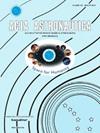大型碎片清除任务中离子束牧马人的鲁棒模型预测控制
IF 3.1
2区 物理与天体物理
Q1 ENGINEERING, AEROSPACE
引用次数: 0
摘要
空间碎片的日益积累给航天器带来了巨大风险,因此开发有效的碎片缓减技术十分必要。本文探讨了离子束牧羊人(IBS)方法,将其作为一种潜在的非接触式解决方案,用于使大型碎片物体脱离轨道。IBS 系统的概念包括一个配备离子推进器的航天器,将受控离子束射向碎片,产生一个小的力,逐渐降低碎片的轨道。建议的追逐者推进器系统配置集成了径向和平面外冷气体推进器以及轨道内离子推进器,以加强控制和安全性,同时保持较低的任务成本。利用跟踪模型预测控制(MPC)理论,实施了稳健的模型预测控制(MPC)策略,以确保精确定位和有效脱轨。这种理论方法可解决不确定性和扰动问题,从而稳健地保证追逐者与碎片之间的安全距离。此外,还引入了一种新的基于射线行进的算法,用于估算离子束对目标施加的力和扭矩,将目标视为一个 6 自由度物体,从而提高了仿真精度和控制性能评估。对一个大型碎片物体的脱轨过程进行了全面模拟,展示了离子束控制技术在未来大型碎片清除任务中的潜力。这项研究推进了 IBS 技术的概念框架和控制技术,为今后在空间碎片缓减领域实施该技术奠定了基础。本文章由计算机程序翻译,如有差异,请以英文原文为准。
Robust Model Predictive Control for an Ion Beam Shepherd in a large-debris removal mission
The increasing accumulation of space debris poses significant risks to spacecraft, making the development of effective debris mitigation technologies necessary. This paper explores the Ion Beam Shepherd (IBS) method as a potential contactless solution for deorbiting large debris objects. The IBS system concept involves a spacecraft equipped with an ion thruster to direct a controlled ion beam at the debris, generating a small force that gradually lowers its orbit. A proposed configuration of the chaser’s actuator system integrates radial and out-of-plane cold-gas thrusters along with in-track ion thrusters to enhance control and safety while maintaining low mission costs. A robust Model Predictive Control (MPC) strategy is implemented, using the theory of MPC for Tracking to ensure accurate positioning and effective deorbiting. This theoretical approach addresses uncertainties and perturbations to robustly guarantee safe distances between the chaser and the debris. Additionally, a new ray-marching-based algorithm is introduced to estimate the force and torque exerted by the ion beam on the target, considered as a 6 degrees of freedom object, improving simulation accuracy and control performance assessment. A comprehensive simulation of the deorbit of a large debris object is performed, demonstrating the potential of the IBS technology for future large-debris removal missions. This research advances the conceptual framework and control techniques for the IBS technology, advancing towards its future implementation in space debris mitigation.
求助全文
通过发布文献求助,成功后即可免费获取论文全文。
去求助
来源期刊

Acta Astronautica
工程技术-工程:宇航
CiteScore
7.20
自引率
22.90%
发文量
599
审稿时长
53 days
期刊介绍:
Acta Astronautica is sponsored by the International Academy of Astronautics. Content is based on original contributions in all fields of basic, engineering, life and social space sciences and of space technology related to:
The peaceful scientific exploration of space,
Its exploitation for human welfare and progress,
Conception, design, development and operation of space-borne and Earth-based systems,
In addition to regular issues, the journal publishes selected proceedings of the annual International Astronautical Congress (IAC), transactions of the IAA and special issues on topics of current interest, such as microgravity, space station technology, geostationary orbits, and space economics. Other subject areas include satellite technology, space transportation and communications, space energy, power and propulsion, astrodynamics, extraterrestrial intelligence and Earth observations.
 求助内容:
求助内容: 应助结果提醒方式:
应助结果提醒方式:


